We’re just past the first weekend of spring. Crocuses, daffodils and early cherry blossom are washed in gentle sunshine one day, cool rain the next. There is lots of fresh snow in the local mountains, a reminder that winter isn’t done with us yet. But that doesn’t deter keen gardeners from flocking to nurseries and garden centres to pick out what they need for the coming season. Seeds, seedlings, shrubs, potting soil, manure, flowerpots. Maybe even a garden gnome or two.
Doing a spot of spring cleaning of the contents of my freezer, I came upon a packet of white poppy seed that had somehow escaped my attention these past months. They’re still fresh and viable, though strictly in the culinary sense. They certainly aren’t going to be planted in my garden, given that they might grow into something quite illegal!
“Papaver somniferum, the Opium poppy, is the species of plant from which opium and poppy seeds are derived. Opium is the source of many narcotics, including morphine (and its derivative heroin), thebaine, codeine, papaverine, and noscapine. The Latin botanical name means the “sleep-bringing poppy”, referring to the sedative properties of some of these opiates.”
Well! No, these are just going into something I enjoyed at home in Coorg recently. One of my favourite (and perfectly legal) desserts – kaskasé* payasa.
India is a major producer of raw opium for pharmaceutical use. Crops of opium producing poppies are grown under close government supervision in areas of Rajasthan, Madhya Pradesh, and Uttar Pradesh. Unlike other countries where opium is also legally cultivated, the harvesting process in India continues to be done the old fashioned way – lancing the capsules by hand, then collecting the resin that seeps out overnight. Once all the exudate has been collected and the capsules are dried out, they are harvested and the seeds collected for oil as well as myriad culinary uses. The cuisine of Bengal is probably the most well known for its love affair with white poppy seed, or posto, which can be the main ingredient in a dish.
Many decades ago, not long out of Coorg, and struggling with the lack of fresh coconuts in a small town in Madhya Pradesh, my mother was advised by her cook to use ground poppy seed instead, for a fine, thick sauce. Evidently, it wasn’t habit forming, because once coconut was available again, her recipes reverted to a more traditional form!
In Coorg, khus khus may be used in small amounts in sweets like karjikai or kajjaya. The ground paste may also be used to enrich a pulao. The tiny seeds have a unique flavour and a kind of grassy nuttiness. Roasting them lightly enhances the sweetness, but some of the delicate flavour is lost. Probably my favourite dish featuring khus-khus, and one that really highlights that flavour, is khus khus payasa.
This heavenly dessert is made by grinding together rice, coconut and poppy seed, then cooking the extract with fresh milk, sugar or jaggery, and warm cardamon and saffron. It is a popular dish around Karnataka (known as gasagasé payasa) and you’ll find small variations in the process and proportions.
A great wedding favourite, it’s usually served in small cups, to be sipped at the end of the feast. Guests will invariably joke about the soporific effects of this payasa potion! Try it. It’s so good, it should be illegal. 🙂
* In Kodava Thakk, white poppy seed is known as kus kus, or kaskasé. As a matter of convenience, in this piece, I will stick to the more widely used “khus khus”.
Kaskasé Payasa
Dreamy creamy dessert made with white poppy seeds
- 1/2 cup rice (basmati or any small grained fragrant rice)
- 2/3 cup white poppy seed/khus khus
- 2 cups grated coconut (only fresh will do!)
- 1/2 – 2/3 cup sugar or to taste
- 1 cup whole milk
- Seeds from 1-2 pods of cardamon, finely ground
- 10 –12 almonds, blanched, slivered and lightly toasted
- 1 tbsp golden raisins, fried in a little ghee
- A few strands of saffron, very lightly toasted and crushed
- Cheesecloth or muslin for straining the mixture
- A heavy based pan
Wash the khus khus** and the rice and soak in fresh water separately for at least 3 hours.
Drain, then combine the rice, khus khus and coconut and grind to a smooth paste***. Add a little water to help the mixture move. After the rice is broken down quite fine, add up to a cup of water and blend until the mixture has the consistency of thin pouring cream.
Drape the straining cloth over a bowl (or the pan) and pour the ground mixture in. Allow the more liquid portion to drip through, then gather the corners of the cloth and make a bundle, containing the solid portion. Twist and squeeze the bundle to push out the liquid. Keep going, until you are left with a dry, crumbly mass in the cloth, and a bowlful of milky beauty.
Return the dry portion to the grinder and add a little more water to extract any remaining milk. Repeat the process until you’re sure nothing remains.
Transfer to a heavy based pan and add the sugar, milk, saffron and cardamom. Stir to combine.
Cook on low heat, stirring to prevent the ground rice from settling and scorching. When the mixture has thickened, remove from the heat. This should take about 15 minutes.
Transfer the payasa to a serving dish and toss on the almonds and raisins. Serve warm.
Made this way, the payasa has the consistency of a rich custard. If you want a thinner payasa, add more liquid (water and milk, and perhaps a little ghee) before cooking and adjust the sugar and other ingredients.
Eat, and sleep well! 😉
**Some cooks like to lightly toast the poppy seeds before using them. It makes for a nuttier flavoured payasa.I personally prefer the creaminess from untoasted seeds here.
***If you don’t have a mixer powerful enough to grind down the rice and poppy seeds, you can dry grind both in a spice grinder before soaking.

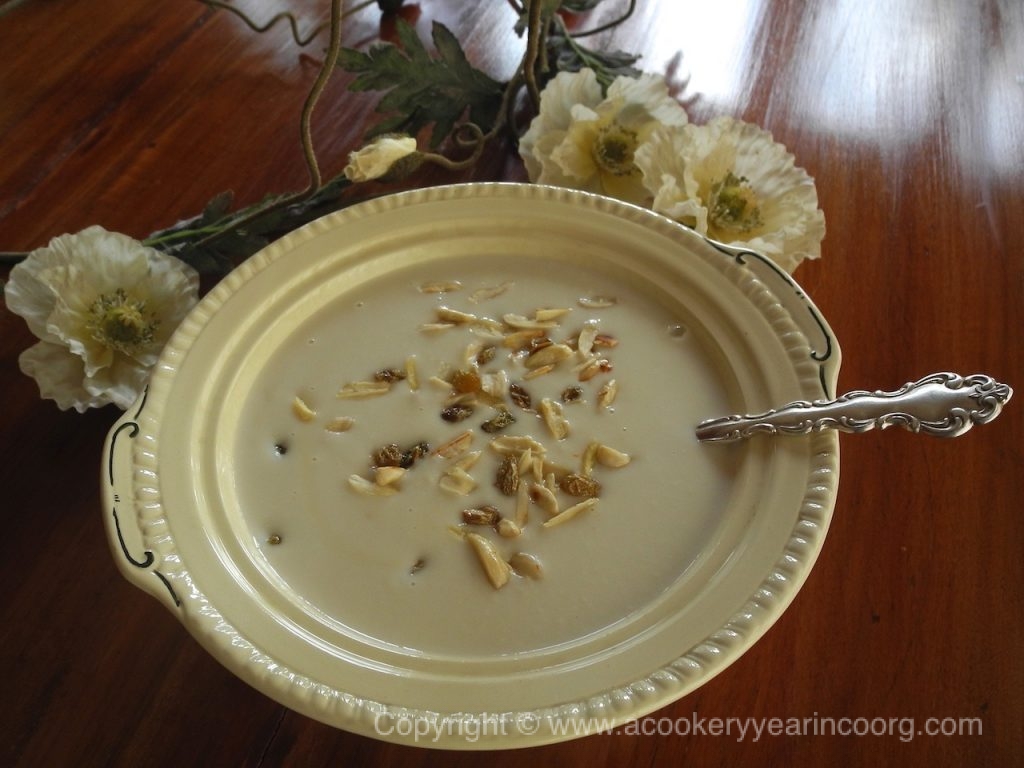
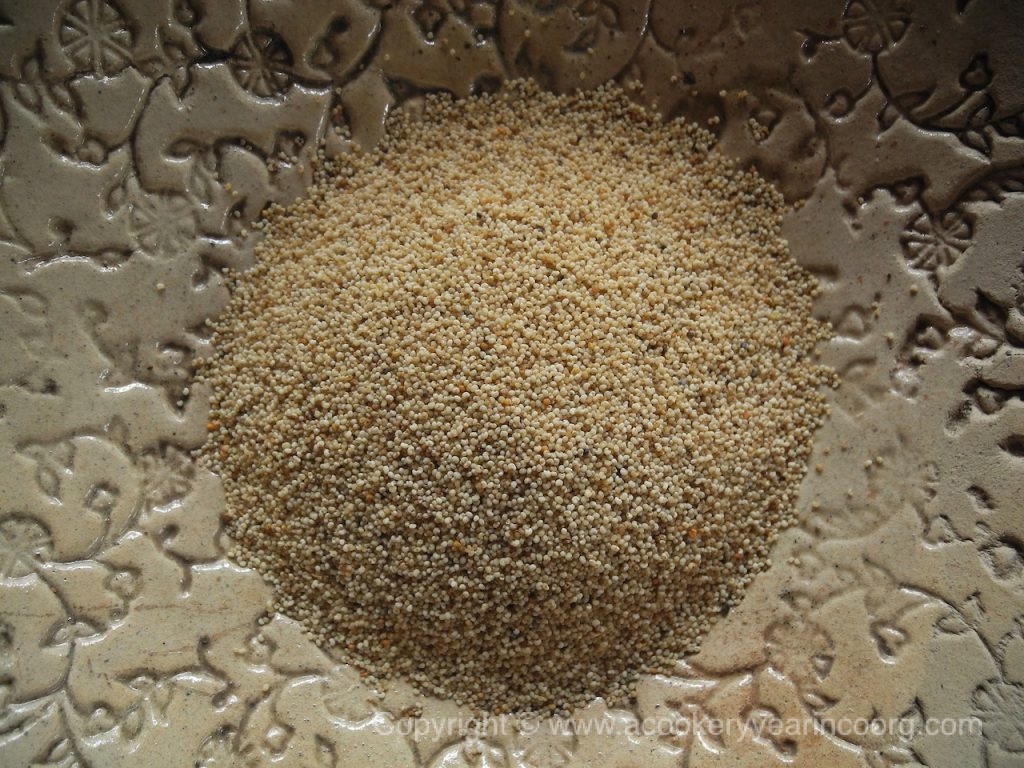
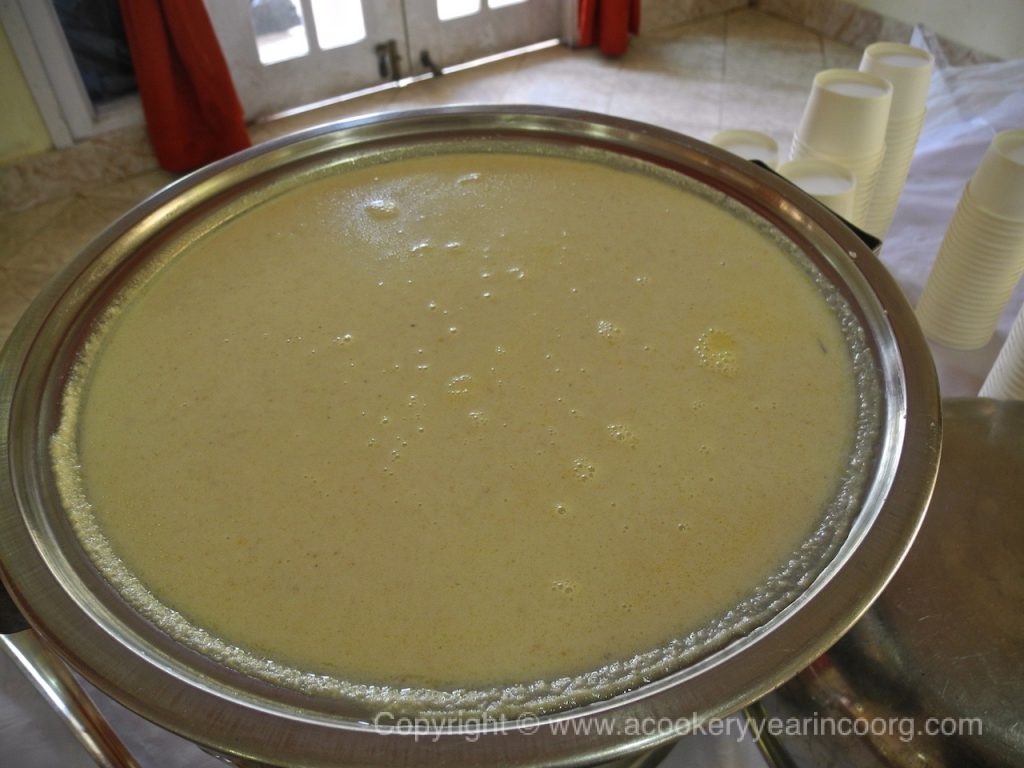
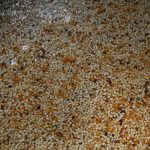
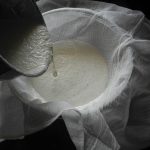
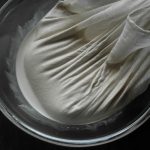
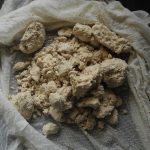
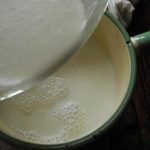
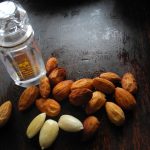
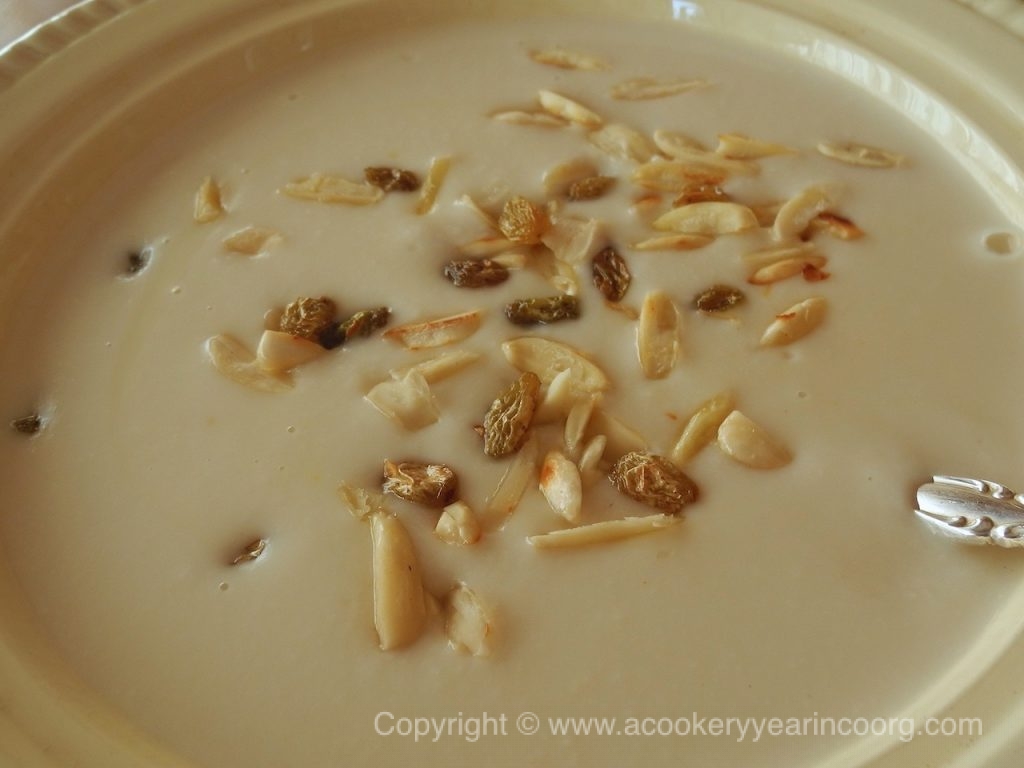
There are some dishes which you know are going to taste heavenly by just looking at them and this payasa is just one of those . This is such an elegant and refined dessert . Thank you for sharing the recipe though I must say it requires a fair amount of effort . The pictures are as usual so wonderful . Love the beautifully elegant dish and the spoon with the flowers on the table. I have never made it myself but my mother-in law sent a huge bowl of it to me when I had caught a nasty stomach bug . There is an Austrian sweet like a bready dumpling… and for the life of me I cannot remember the name .
My mother in law was also given the same advice by a cook and that too in Jhansi in the late 1950s . The flavour is quite different from coconut but still a nice thickening agent. Lighter and more flavourful than the onion based thick curries .
Thank you for the recipe must give it a try. Does it cool the stomach ? In any case perfect for the hot summer , I suppose one can have it chilled or nicely cooled own ?
Jyoti, it’s really not that much effort at all- just soak, grind, extract, and simmer. In fact, wringing out the ground mixture is probably the most delicious part. 🙂 The payasa is lovely served lightly chilled. I don’t know if it’s considered cooling but poppy seed does seem to be used to settle the stomach. Some bakeries here sell the most wonderful breads and pastries filled with a paste made from blue poppy seed -the kind used in Europe. Quite a different flavour, but also really delicious.
We were in Jhansi too!
Oh my goodness. This looks so delicious. I am going to make it soon. I might reduce the volume a little bit though. Once perfected, I’ll increase the quantity again. Thanks for the recipe.
Thank you, Spicesandpisces, and welcome!I hope you’ll try this – it really is very good.